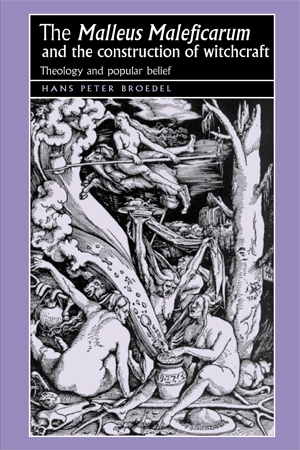The Malleus Maleficarum (“The Hammer of Witches”) is the classic Catholic text on witchcraft and was first published in 1487. The Malleus Maleficarum was notorious for its use in the Witch-hunts which were started on a national scale across Europe.
Two Dominican inquisitors Jacob Sprenger and Heinrich Kramer compiled it and submitted the book to the University of Cologne’s Faculty of Theology for their approval on the 9th of May, 1487. This is usually taken as the date of publication, although earlier editions may have been produced in 1485 or 1486. It was published in a number of editions, thirteen times from 1487 to 1520 and revived another sixteen times from 1574 to 1669. The book was popular throughout Europe with at least sixteen German editions, eleven French editions, two Italian editions and several English editions. The English editions, however, did not appear until much later. For its time, the Malleus was the lead authority available to the masses on the subject of witchcraft and soon became accepted by both Catholics and Protestants, adding to there’re already religious favours.
The work was originally prefaced by the papal bull ‘Summis desiderantes’, as issued by Pope Innocent VIII on the 5th of December 1484, and which remains the main Papal document on witchcraft. It mentions Sprenger and Kramer by name and directs them to combat witchcraft in northern Germany. The book itself was not specifically ordered by the Catholic Church but was written to lend credence to and enforce the bull. To help its credulity, the writers then attached a letter of approbation from the University of Cologne, signed by four of its professors.
The book is divided into three sections, the first proving witchcraft or sorcery existed, the second describing the forms of witchcraft and the third the detection, trial and total destruction of witches. The first two sections are thought to have been the work of Sprenger, who as a distinguished theologian put together the theological and intellectual components of the book. Section three and the practical components of the book are most likely the work of Kramer, who had conducted a campaign in the Tirol during the early 1480s and had gained much experience as a trial judge.
The book begins with a discussion of the nature of witchcraft and the need for administrators to thoroughly comprehend its enormity. This generally comprised of the renunciation of the Catholic faith, devotion and homage to the Devil, the offering of unbaptized children and sexual intercourse with Incubi and/or Succubi. It also “explains” why women by their weaker nature and inferior intellect were naturally more prone to the lure of Satan. It then goes on to declare that some things confessed by witches, such as animal transformations, were mere delusions induced by the devil to ensnare them; other acts were real, such as flight, causing storms and destroying crops. The book dwells at length on the licentious acts of witches and the question of whether demons could sire children with a witch.
Part II deals with the three types of maleficia and how these can be counteracted. Here they sanction all the myths, fables and folklore about the doings of witches: their pacts with the Devil, sexual relations with devils and demons, transvection, metamorphosis, injury to cattle and crops, and a whole range of subjects normally ascribed to sorcery. (These were the accusations put upon Grissell Jaffray, Hurkle Jean, and, undoubtedly, many people of Dundee before and after them).
The last section deals with the practical details of the detection, trial and destruction of witches. It covers the rules for initiating legal action against witches, securing a conviction and passing of sentences. It concludes with how much belief to place in witnesses’ testimonies and the need to eliminate malicious accusations, but it also states that public rumour is sufficient to bring a person to trial and that a too vigorous defence is evidence that the defender is bewitched. There are rules on how to prevent the authorities from becoming bewitched and the reassurance, that as representatives of God, the witch can have no power over the investigators. It covers details of how to elicit confessions, including the sequence of torture and questioning to be used, the use of a red-hot iron is recommended, as is the shaving of the entire body of the accused in search of tokens or marks of the Devil.
Do you want to know more about the history and the use of witchcraft in Scotland and Europe? You should definitely read The Malleus Maleficarum and
the construction of witchcraft: Theology and popular belief by Hans Peter Broedel – free to download below!
– DD Tours operates walking tours in Dundee city, covering dark local history such as wars, battles, murders, diseases, riots, disasters and executions. Walk with us for an unforgettable storytelling experience.
***

